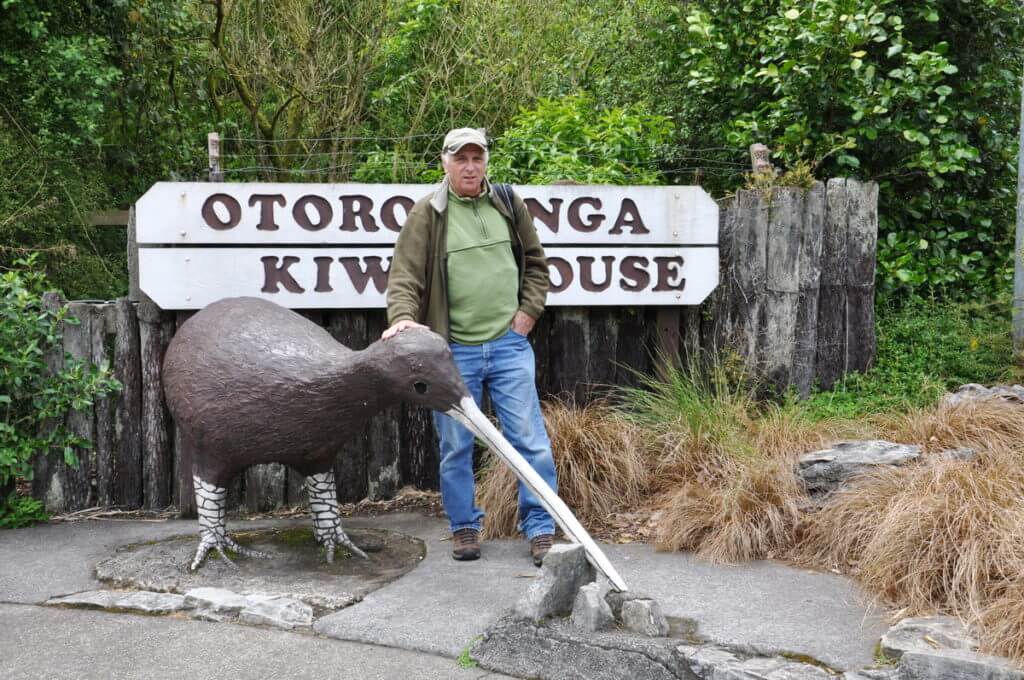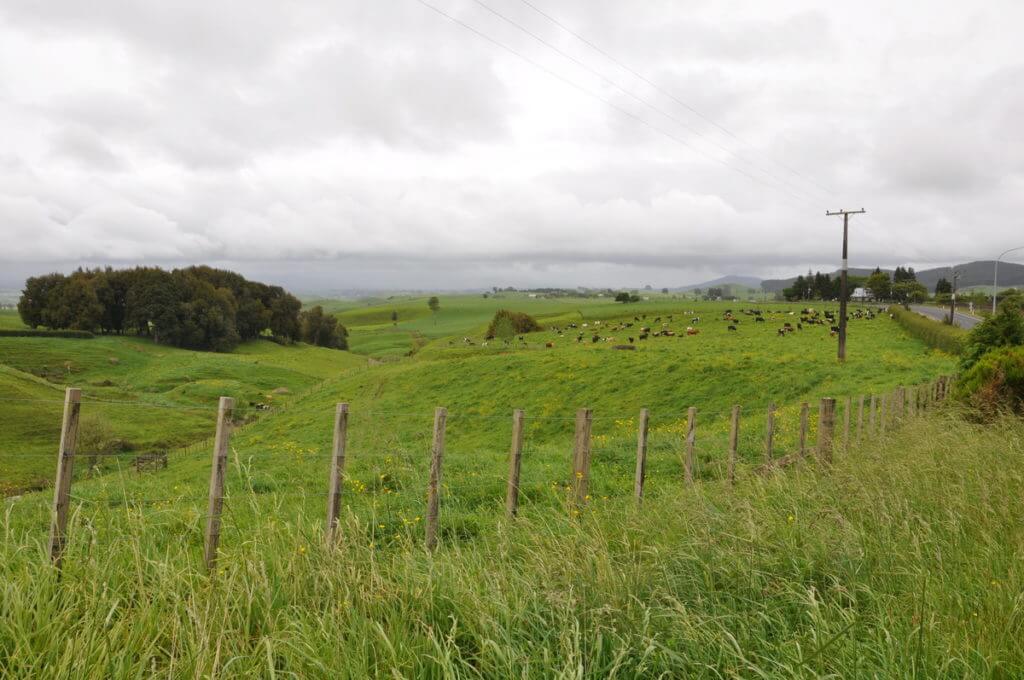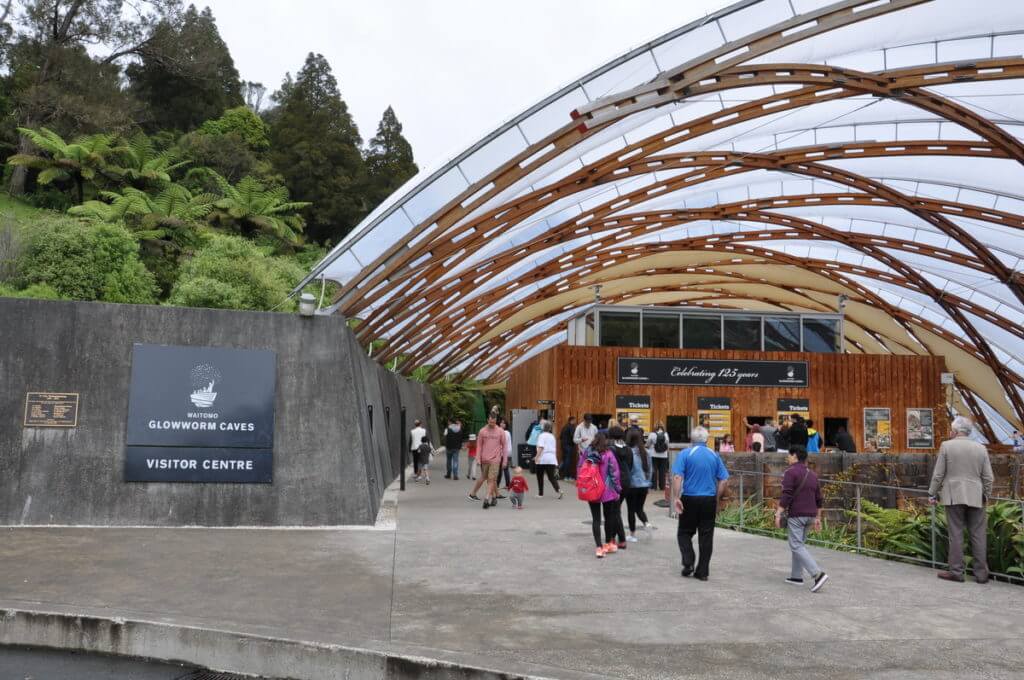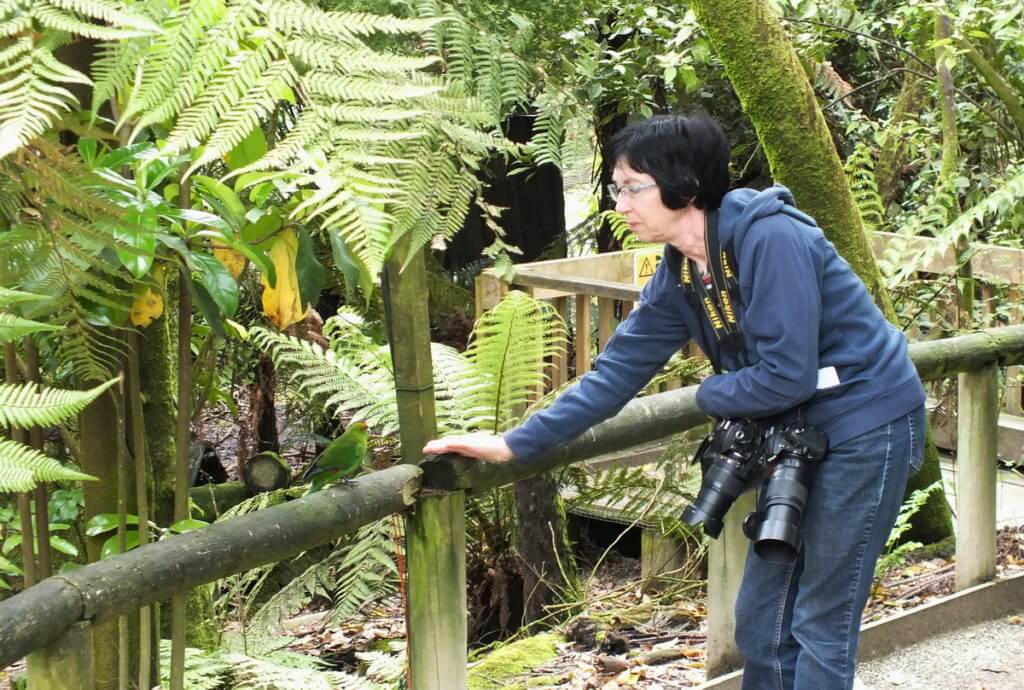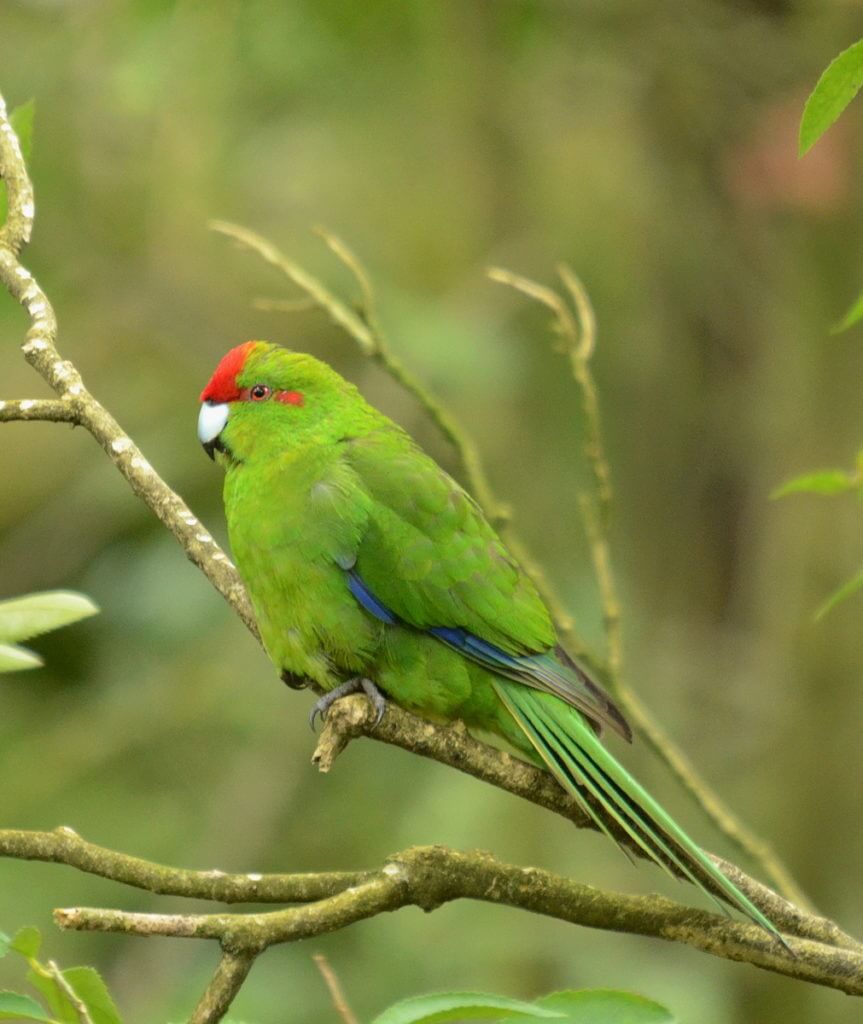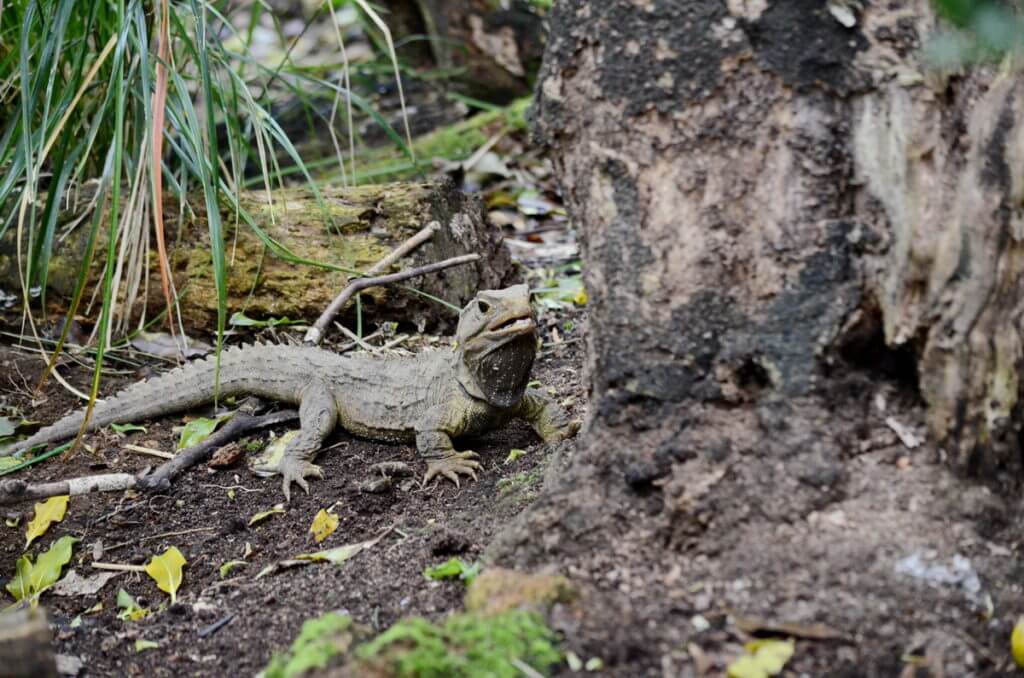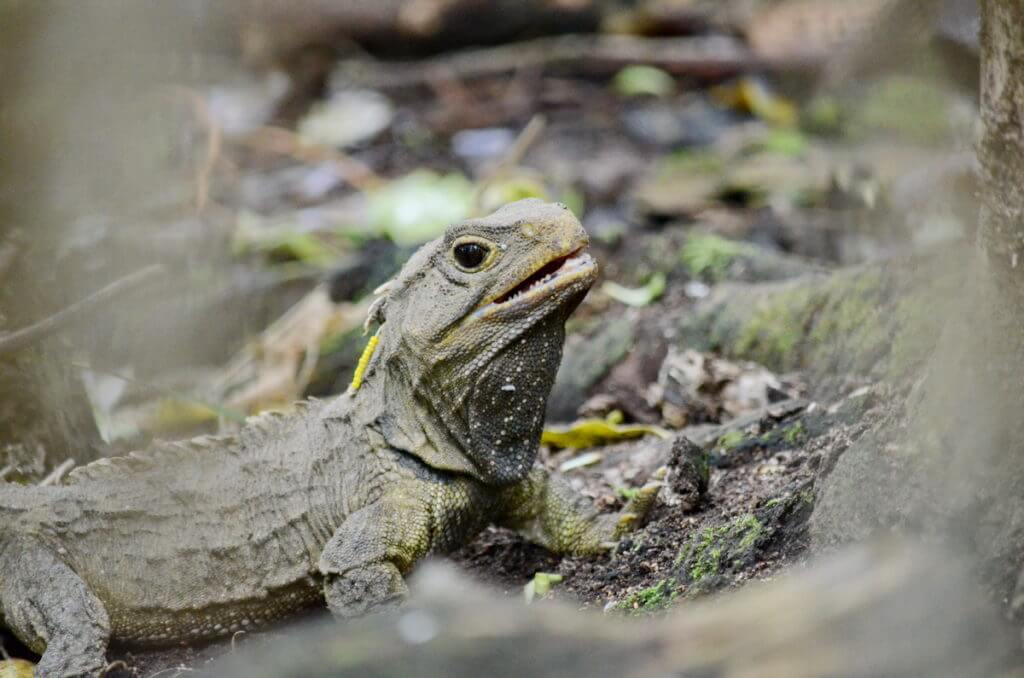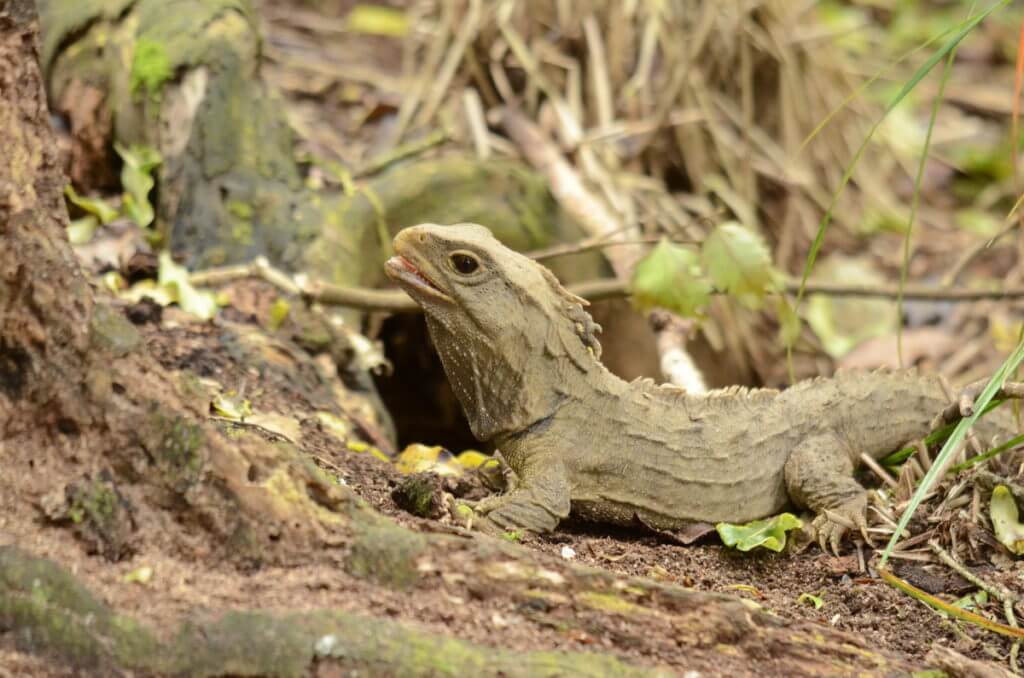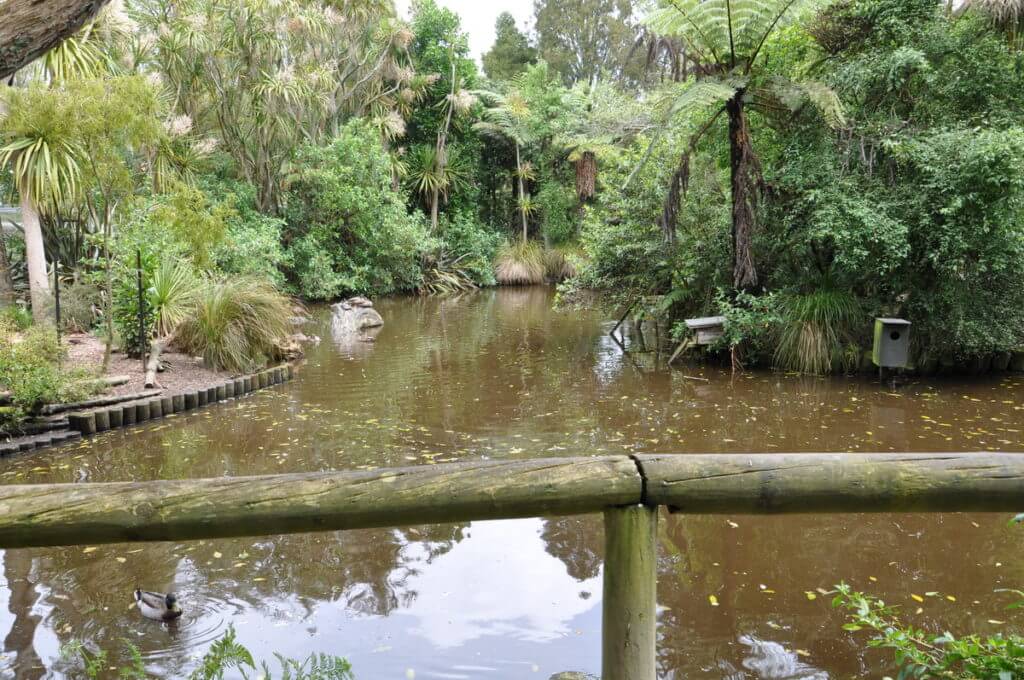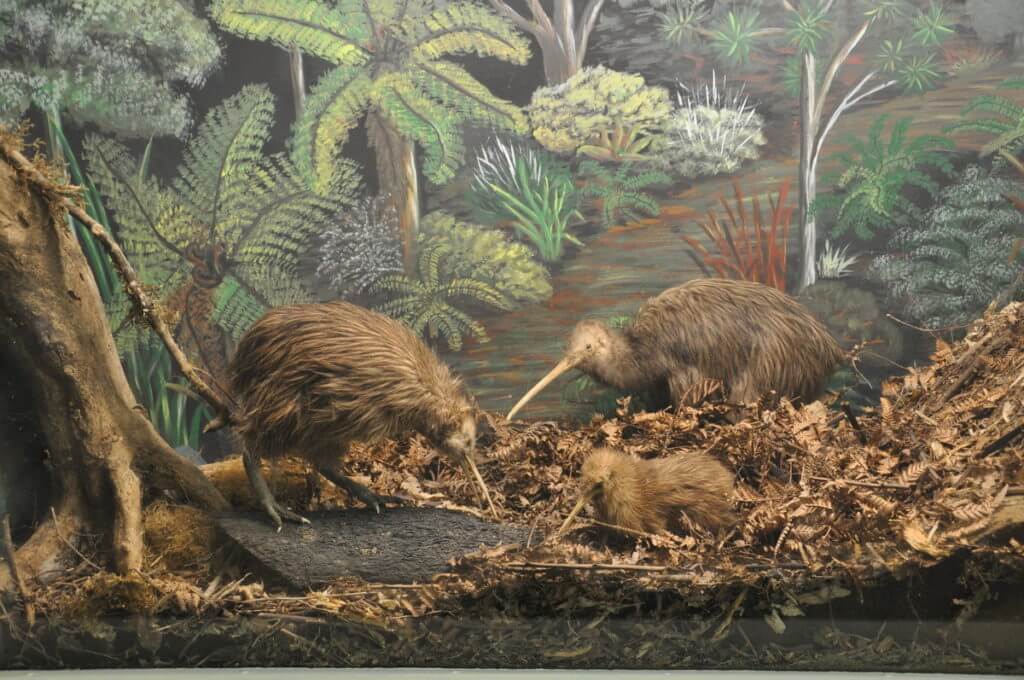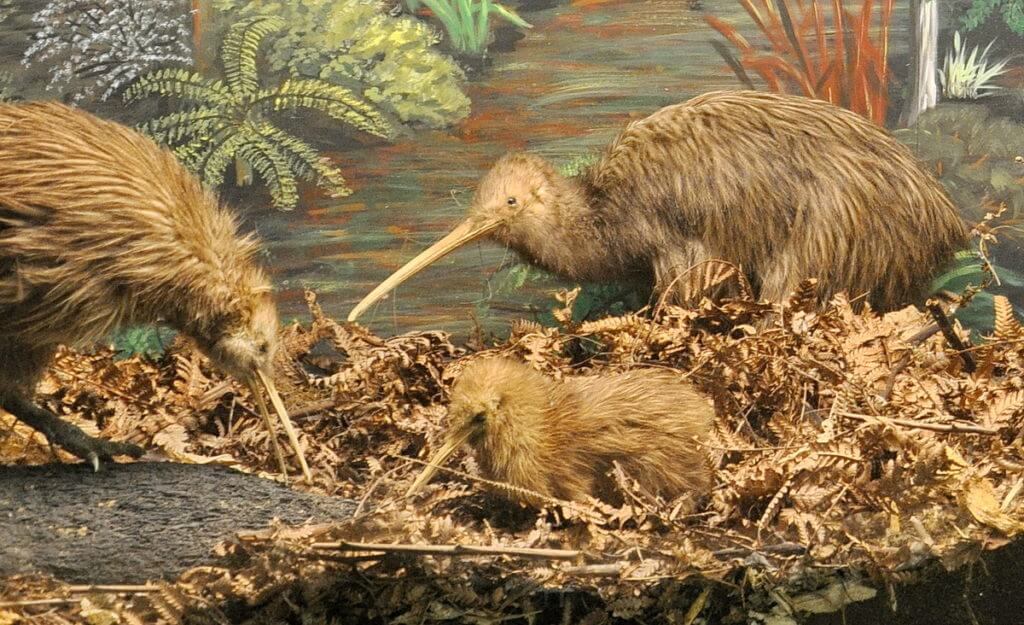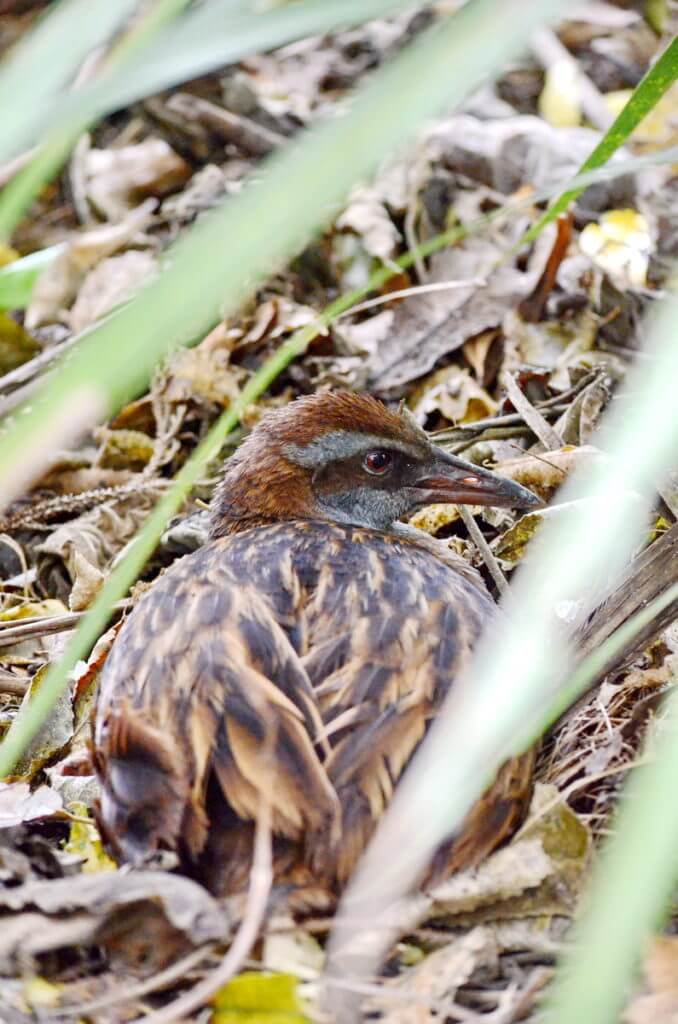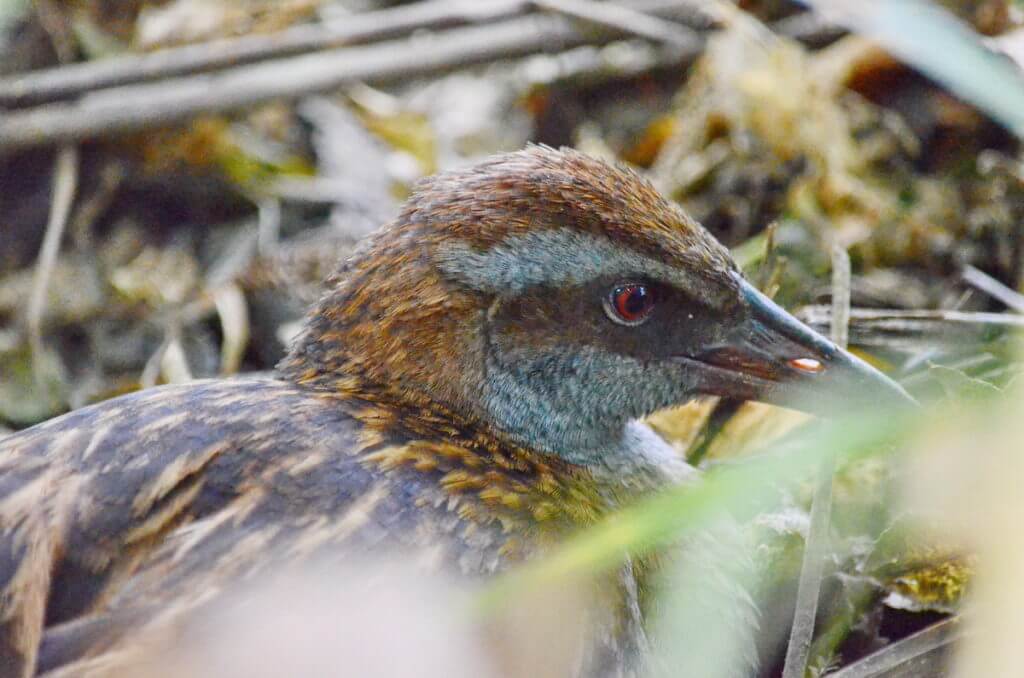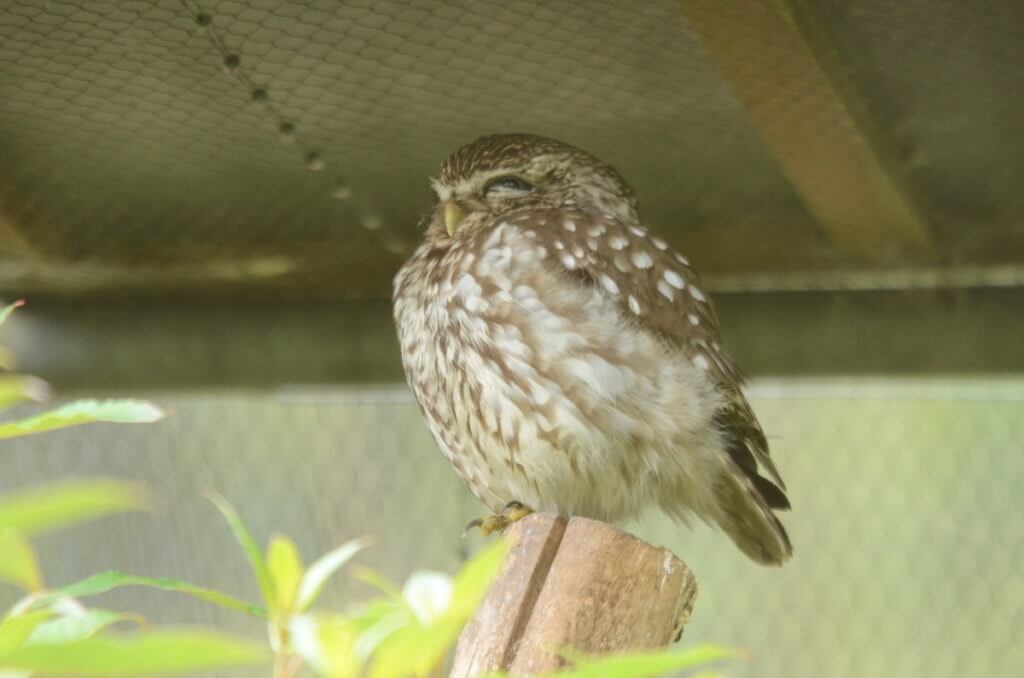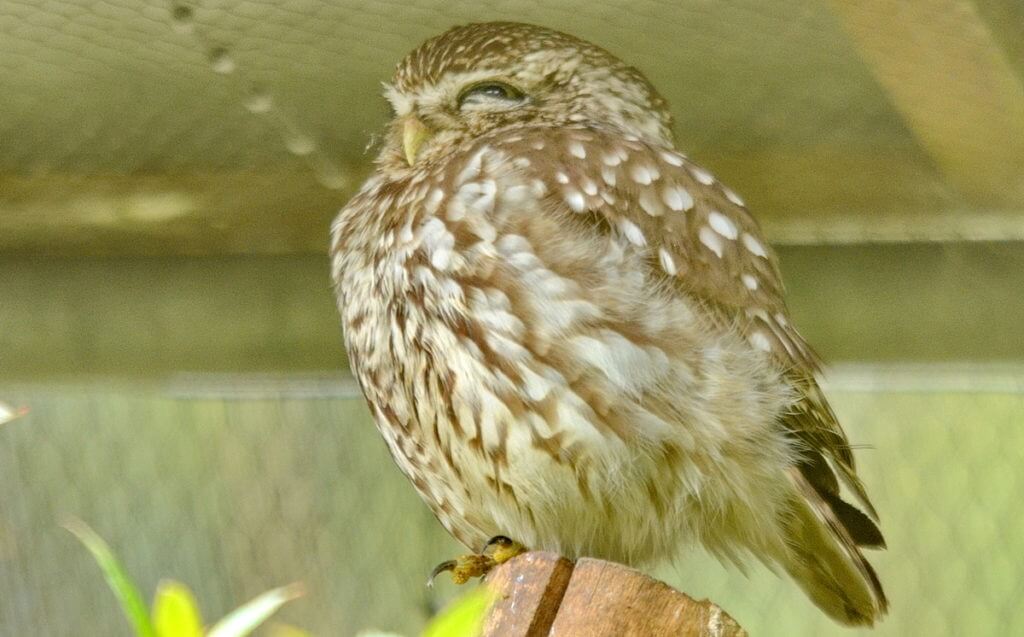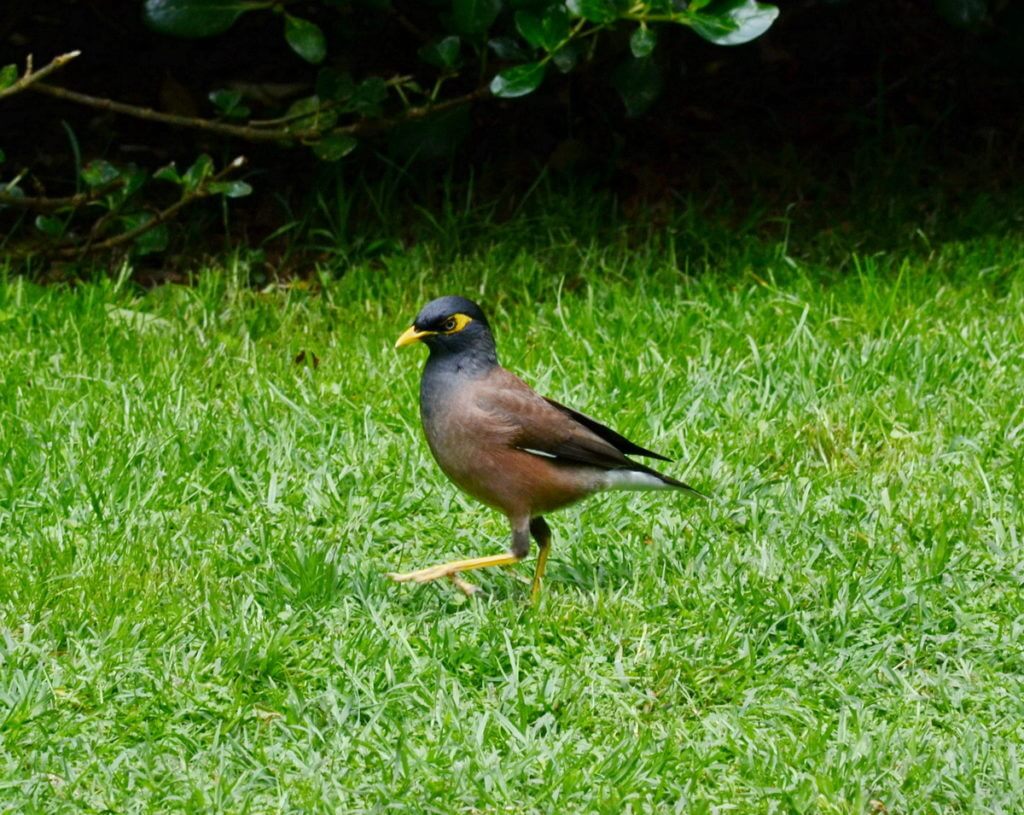Our Travels To Otorohanga Kiwi House In New Zealand

On one overcast and damp day in New Zealand, Bob and I decided to drive from Rotorua into the countryside for a tour of the Waitomo Glowworm Caves. It seemed a good way to make use of a dreary day. Before our tour, we passed a couple of hours at the Otorohanga Kiwi House & Native Bird Park.
With the landscape damp from overnight rain, the vegetation appeared lush and green making for a scenic drive toward our destination.
We arrived at Waitomo Glowworm Caves at noon and promptly booked a 3 o’clock tour. To kill some time, Bob and I decided to visit nearby Otorohanga Kiwi House. There, it would be possible to see native species of birds that are difficult to come across in the wild.
We began our tour of the grounds in the free-flight domed aviary
where I was delighted to have a Red-crowned Parakeet actually eat bird seed out of my hand.
Red-crowned Parakeets used to be considered as near-threatened because invasive predators had become a real bane to their existence forcing them out of their habitat.
Even though they are now a species of least concern, Red-crowned Parakeets are seldom seen on the two main islands of New Zealand. Where the species thrives is on pest-free offshore islands of New Zealand.
Next to capture our interest was a Tuatara, a type of lizard-like reptile. Tuataras are endemic to New Zealand.
Belonging to the order Rhynchocephalia, they are the only living species of this order that originated in the Triassic period over 250 million years ago. They have been on the planet Earth since before the dinosaurs.
The name Tuatara derives from the Māori language. It means “peaks on the back” and refers to the spiny crest along a Tuatara’s back.
Otorohanga Kiwi House & Native Bird Park occupies a large piece of real estate complete with wetlands, ponds and wooded areas. It is a not-for-profit wildlife and conservation centre that is heavily involved in raising Kiwis for release into the wild.
We toured one of the enclosures where young Kiwi’s run free and engage in normal kiwi behaviour such as probing for insects. Photos are not allowed in that specially designed nocturnal enclosure.
The above diorama aptly illustrates a family of kiwis in suitable habitat including some of the native plants that also populate the kiwi enclosure.
A wild bird that we did observe on the grounds was a Weka. Also known as a Māori hen or woodhen, a Weka is a flightless bird belonging to the rail family.
Weka is considered a vulnerable species and have disappeared from vast areas of their previous range. They are seldom seen on either the North or South Island of New Zealand. Like Kiwis, Weka are impacted by prey such as dogs, cats, ferrets and stoats.
Weka are omnivores that primarily eat invertebrates and a variety of plant leaves and fruits. We would eventually see a Weka on our travels on the South Island, but it was nice to have this observation under our belt already.
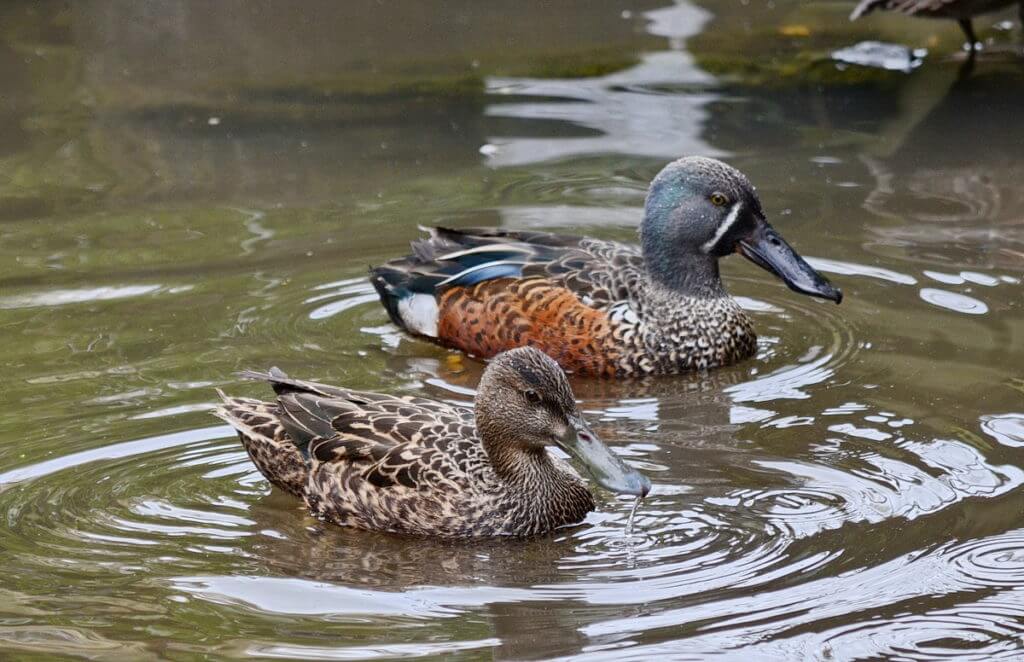 Bob and I had drop-dead views of a number of duck species such as these New Zealand Shovelers. They had found their way to the ideal habitat provided at Otorohanga Kiwi House & Native Bird Park.
Bob and I had drop-dead views of a number of duck species such as these New Zealand Shovelers. They had found their way to the ideal habitat provided at Otorohanga Kiwi House & Native Bird Park.
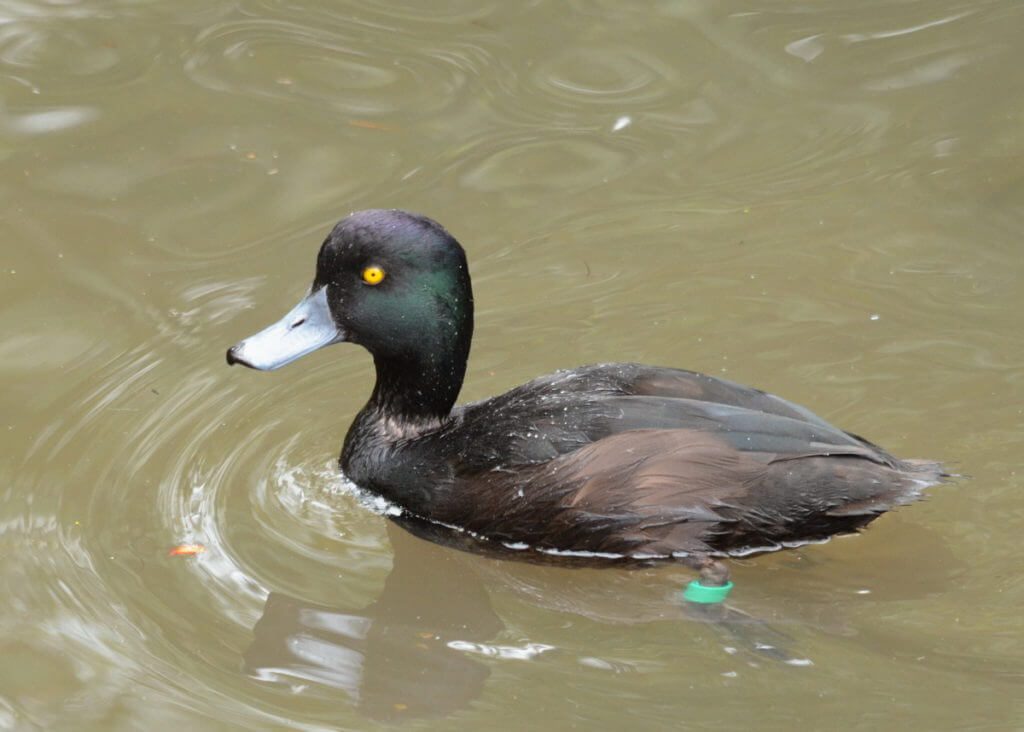 A few New Zealand Scaups delighted us with their colourful iridescence.
A few New Zealand Scaups delighted us with their colourful iridescence.
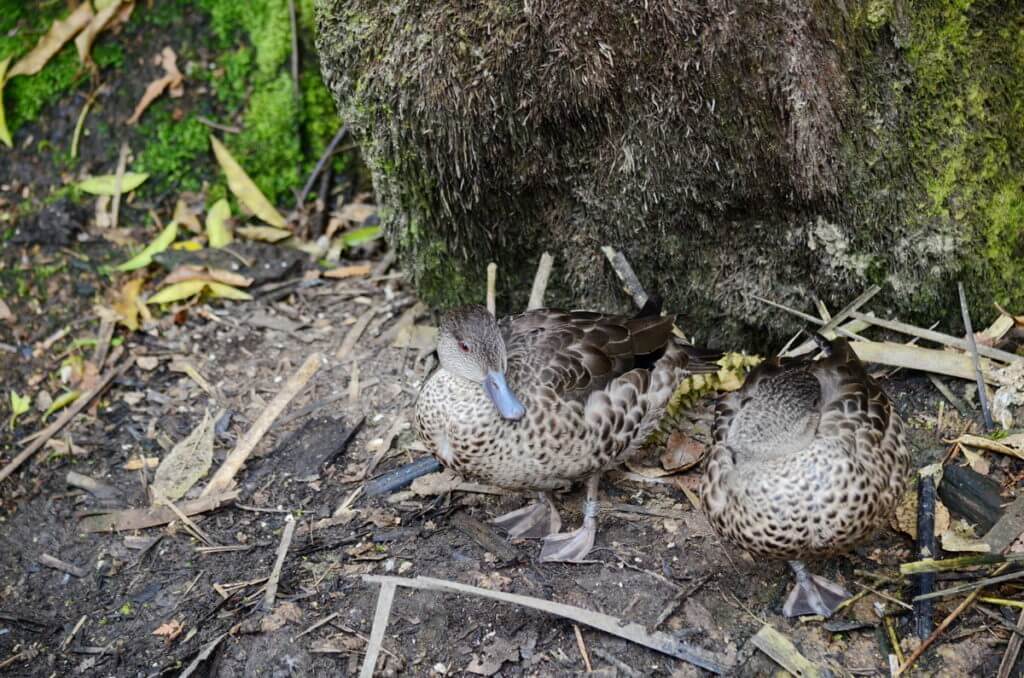 Gray Teal Ducks with their diagnostic red eyes are a dabbling duck that, as a species, introduced itself to New Zealand from Australia. In the 1950s, there was a terrible drought in Australia that resulted in a large number of Gray Teal Ducks fleeing to New Zealand.
Gray Teal Ducks with their diagnostic red eyes are a dabbling duck that, as a species, introduced itself to New Zealand from Australia. In the 1950s, there was a terrible drought in Australia that resulted in a large number of Gray Teal Ducks fleeing to New Zealand.
This little owl with such an unusual name, Morepork, occupied a large cage. Also called a Tasmanian Spotted Owl, a Morepork got its name from the two-tone vocalizations that it makes.
The Morepork is an owl that generally grows to about 10 inches in length.
As Bob and I toured the facility, Common Myna birds were frequently seen. We had already photographed some earlier in our trip, but at close range, it was easier to appreciate their unique colouration.
In no time, Bob and I deemed it necessary to return to the Waitomo Glowworm Caves for our scheduled tour but not before admiring this splendid New Zealand Shoveler hen. Spending a relaxed couple of hours at the Otorohanga Kiwi House had given us a nice opportunity for some exercise before we settled into a boat for an underground tour of the caves.
Frame To Frame – Bob and Jean

